Ever since the early days of the National Matches at Camp Perry over 100 years ago, Service Rifle competitions have always been using metallic or iron sights. This is because the standard issue Service Rifle to the United States military has used iron sights: 1903/1903A3, M1 Garand, M14, and M16. But in the past ten or so years, the military began taking the venerable M16A2 and M16A4 variants with their carry handle upper receivers (with the integrated rear sight) and issuing a flat top, Picatinny railed M16 rifle with a Trijicon ACOG RCO as the primary sighting system.
The Civilian Marksmanship Program which is the governing body of the National Matches (outside of NRA week) and the organization that manages the Distinguished Badge Program, has announced a several significant changes to Service Rifle competitions.
Starting in 2016, Service Rifles will be allowed to use any fixed or variable magnified optical sighting system with a magnification no greater than 4.5x.
Many in the High Power Rifle competition community have predicted that Service Rifles with scopes would become legal in High Power Rifle competitions, and the time has finally come.
Several other changes to Service Rifle include the allowance of any M16/AR15 rifle with a barrel 20″ or less in length and collapsible stocks (without cheek height adjustments).
There are a lot of detractors in the community. A lot of the “old timers” are declaring this a travesty of marksmanship and feel that it diminishes what Distinguished Rifleman such as myself (Distinguished Rifleman #1924 earned in 2009).
Long before the recent official announcement of the new Service Rifle criteria by Gary Anderson, Director Civilian Marksmanship Emeritus, I pondered over the repercussions of scopes in High Power Service Rifle. In the end, I have come to the conclusion that this simply makes sense.
If Service Rifle competitions are dubbed “Service Rifle” because competitors use rifles configured like US military issued service rifles, then the fact that the standard issue rifles are now using Trijicon ACOG RCOs, then the rules need to adjust accordingly.
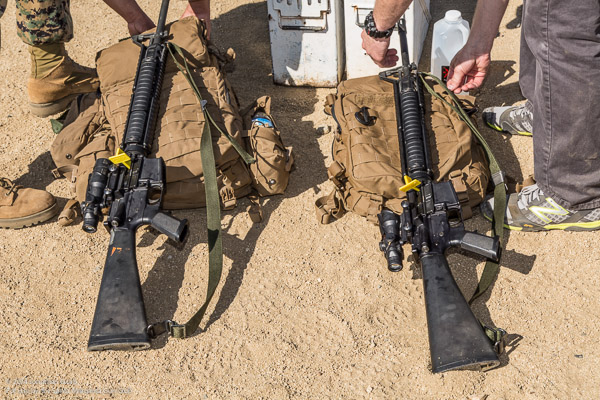
Of course, this gives credence to the argument that the CMP should have simply just allowed the use of ACOG RCOs, instead of *any* magnified optic with a maximum power of 4.5x. But I can’t give any reasoning for the CMP’s decision.
As far as the the prior generations of shooters who have cut their teeth in the iron sight era of Service Rifle shooting complaining that this “makes things easier,” this mentality is simply being stubborn.
If anything, I had it ‘easier’ when I earned my Distinguished Rifleman badge because I shot with a modern day AR15 that benefited from the accuracy advancements made up to now including:
- Free floated barrel
- 1/4 x 1/4MOA National Match rear sight with hood aperture and pinned rear pinion to prevent sight cant
- Low ballistic coefficient 77gr and 80gr+ bullets
- Quality, personally handloaded ammunition
Not to mention the AR15 platform itself is simply easier to shoot compared to the .30-06 and .308 M1 Garand and M14 platforms in terms or recoil management and 3-position shooting (standing, sitting, and prone).
So for me to argue that the next generation of shooters will have it easier than me because they get to use scopes when I had to use iron sights is a bit hypocritical because I got to use the more accurate and more ‘forgiving’ M16/AR15 and platform whereas all the M1 and M14 shooters had to deal with bedding actions in wood stocks, higher season to season maintenance (hiring an armorer or gunsmith to rebarrel), and harder recoiling guns in the rapid fire stages.
When it all comes down to it, shooting with a magnified optic doesn’t necessarily translate to a better shooter.
For anyone who has never seen or shot in a High Power competition, it’s all shot from position with or without a sling (no tripods or mechanical support). Standing position (no sling) at 200 yards, sitting with sling at 200 yards, prone with sling at 300 yards and 600 yards.
Even with a scope, it’s not going to be a cake walk. Shooting at 600 yards with a 4x optic will suffer from mirage, and anyone has an ACOG or something else without good adjustment turrets will find dealing with elevation and windage adjustments more tedious.
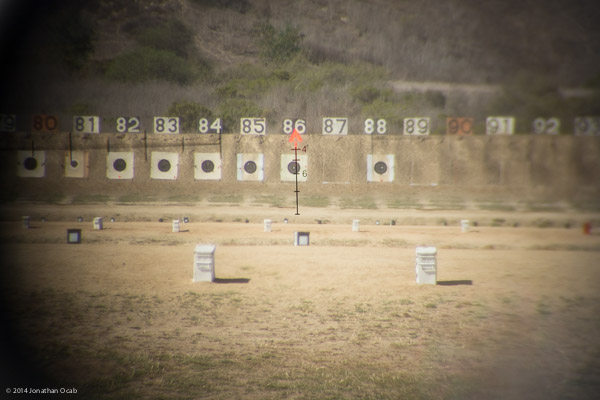
So aside from not having to deal with sight alignment, shooting Service Rifle with a scope will require the same fundamentals as with irons: proper position, good sight picture, clean trigger pull, and consistent shooting cadence.
I think the new changes are just the natural evolution of High Power Service Rifle, and I think the new changes might help energize the High Power Service Rifle format, which is slowly dwindling. The fact that shooters with accurized 16″ carbines and 18″ SPR rifles can essentially participate in High Power Service Rifle matches under the new rules will help bring more people into the sport.
So to all the High Power competitors out there: Put down your pitchforks and relax. The sport isn’t being sullied. The spirit and fundamentals of marksmanship will still remain in High Power Service Rifle competitions.

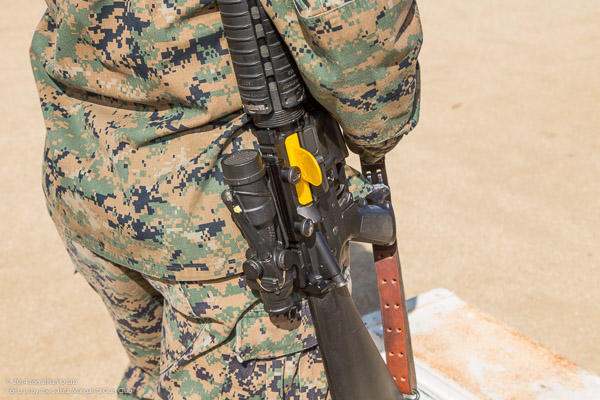
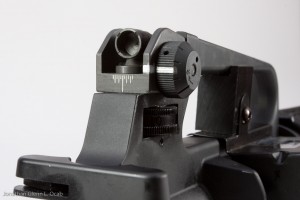
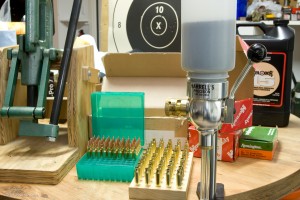
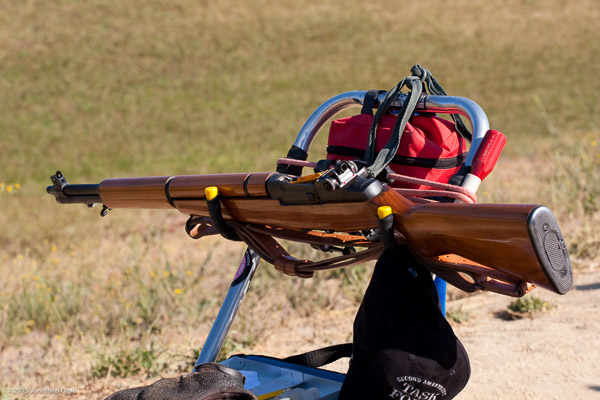
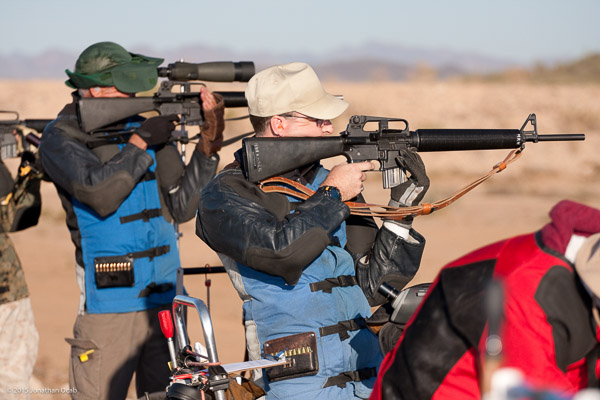
Dave S.
Which scopes would you recommend for my AR15 that would qualify for use in the National Matches?
ocabj
Since I stopped shooting Service Rifle a few years back, I haven’t really looked too deep into SR legal scopes. So I am hardly authoritative on this topic. But I was at Marine Corps Base Camp Pendleton this past weekend for a 3×600 match and SR scopes came up in conversation amongst those with Service Rifle backgrounds. One of the Marines who I have known since he was a junior shooter with our club has indicated they are getting the 1 – 4.5 x 24mm by March Scopes. His unit/team requested the March specifically because it has adjustable parallax. All the other options like the soon to be released Nightforce Optics COMPETITION SR FIXED 4.5X24 have fixed parallax (Nightforce is 200 yard parallax). The main detractor with the two scopes I mentioned is that they are a bit pricey. The March runs for ~$2500 and I think the Nightforce is going to run at $1800. White Oak Armament is selling a scope they had built to spec by Leupold: Mark AR 1-4×20 W/ 1/4 MOA M1 Windage And Elevation Knobs, Wide Duplex Reticle, 300 Yd Parallax. This only runs for $450 on the WOA site. Granted, you can buy any scope that falls within the rules and try to run it. But I think they key issues for an SR legal scope as far as competition is concerned are: quality of glass, reticle, parallax, and turrets. Is the glass clear? Is the reticle usable for HP targets? Is the parallax (if fixed) going to be usable at 600 yards? Are the turrets easy to adjust (tactile, responsive, and track repeatedly).
One final note: There is a rumor that they may change the allowed magnification (possibly higher magnification). I’m not sure how founded this rumor is, but you might want to check with folks with NRA rules committee connections. This could really screw with people who invest on a scope for Service Rifle early on.
National matches shooter
What model acog is in the first picture?
ocabj
I’m pretty sure it is the TA31RCO-A4CP. That’s the standard optic for the Marine Corps.
Roger Powell
Does the Trijicon ACOG TA31 4X32 rifle scope qualify for use under the NRA high power rules? And if so why is no one using it when its standard issue for military service rifles ? I just purchased my first rifle and now buying all the equipment to begin NRA competition matches but having problems selecting a scope. thank you, rwp
ocabj
Yes, it does qualify for use under the new rules. But frankly, it’s a terrible optic for target shooting simply because of the windage and elevation adjustments. The ACOG stands for Advanced Combat Optical Gunsight with emphasis on combat in terms of design. When you get these zeroed, the operator is instructed not to adjust the optic except to rezero. That means you’re using the BDC reticle for elevation holds and then just holding left and right for windage adjustments. Obviously, this is not ideal for Across the Course, three-position shooting. Trying to remember a windage hold over perfectly during a 200 yard sitting rapid string is not ideal. You may as well just use irons.
I wrote this article near the turn of the year. There have been quite a few new scopes released specifically for Across the Course. The Nightforce Optics version is popular, but one guy I know on a USMC shooting team was issued a March Scope for his competition service rifle. I got behind it and it is quite nice.
https://www.smgunclub.org/wordpress/wp-content/uploads/2016/09/SMGC-20160910-085941-1200.jpg
Optical clarity is excellent. Externally adjustable turrets. Adjustable parallax (which from what is told, is not available on the other manufacturers NRA/CMP legal scopes; only March).
Lou Kapp
In all fairness, you can upgrade your old equipment to meet the new standards and then it is really a matter of who is the best marksman anyway. Nobody is forcing anyone to compete using an M1 or an M16 with iron sights. And like the author said, anything that can increase the popularity of the sport is a good thing. Especially in todays climate.